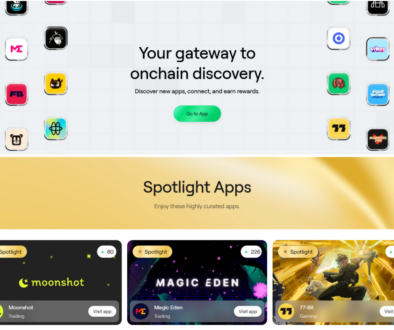2024: The Year of Alternative Layer 1s Rising in the NFT Realm – SOL, Tezos, and SEI Lead the Charge
The Dawn of a New Era in NFTs: Exploring the Rise of Alternative Layer 1s
As we venture into 2024, the NFT landscape is undergoing a seismic shift, with alternative Layer 1 blockchains like Solana (SOL), Tezos, and SEI emerging as significant players. This shift marks a pivotal moment in the evolution of the NFT ecosystem, diversifying the platforms on which digital art and collectibles thrive.
1. Diversification Beyond Ethereum: A Breath of Fresh Air for NFTs
Historically, Ethereum has been the dominant force in the NFT space. However, alternative Layer 1s like SOL, Tezos, and SEI offer fresh opportunities. Their unique features, such as lower transaction fees and faster processing times, make them attractive to artists and collectors seeking new avenues for NFT creation and trade.
2. Niche Communities and Innovative Use-Cases
These alternative blockchains are carving out niche communities and fostering innovative use-cases. For instance, Tezos has become a hub for eco-conscious artists due to its energy-efficient design, while SEI’s high throughput is appealing for high-frequency trading NFTs.
3. Enhanced Scalability and Performance
Scalability remains a key concern in the NFT space. Alternative Layer 1s address this issue head-on, offering superior scalability and performance compared to older blockchains. This feature is crucial as the NFT market expands and requires more efficient infrastructure.
4. Tailored Solutions for Diverse Needs
Each of these alternative Layer 1s brings tailored solutions to the table. Solana, known for its lightning-fast speeds, is ideal for projects that require quick transactions. Tezos, on the other hand, appeals to those prioritizing eco-friendliness.
5. Growing Ecosystems and Partnerships
The expanding ecosystems and partnerships surrounding these blockchains are a testament to their growing influence. Collaborations with artists, brands, and tech companies are broadening the scope and appeal of NFTs on these platforms.
BTC’s Entry into NFTs: Ordinals and Inscriptions
2024 also witnesses a groundbreaking development in the NFT space with Bitcoin (BTC) introducing ordinals and inscriptions. This new concept involves directly inscribing digital assets onto individual satoshis, the smallest unit of Bitcoin, adding a fresh dimension to the NFT market.
The Significance of Bitcoin’s Ordinals
Bitcoin’s foray into the NFT world is notable for several reasons. Firstly, it leverages the robust security and widespread recognition of the Bitcoin network. Secondly, ordinals introduce a unique way of tokenizing assets, differing from traditional NFT standards. This innovation could attract a new wave of collectors and creators, eager to explore the possibilities within the Bitcoin ecosystem.
Implications for the NFT Landscape
The introduction of Bitcoin ordinals and inscriptions is poised to enrich the NFT landscape. It not only expands the range of blockchain options for NFTs but also brings the credibility and stability of Bitcoin to the forefront of digital art and collectibles.
The Unstoppable Rise of Layer 2s: Ethereum’s Counter
While alternative Layer 1s and Bitcoin’s new venture are making waves, Ethereum’s Layer 2 solutions, particularly Arbitrum, are not to be overlooked, especially in the gaming sector. Arbitrum is poised to extend its lead in 2024, offering a blend of Ethereum’s security with enhanced scalability and lower fees, making it ideal for NFT-based games.
Conclusion: A Balanced NFT Future
2024 promises to be a landmark year for NFTs, with both alternative Layer 1s, Bitcoin’s innovative ordinals, and Ethereum’s Layer 2 solutions like Arbitrum playing critical roles. This balanced growth ensures a vibrant, diverse, and technologically advanced NFT ecosystem.
TLDR: 2024 marks the rise of alternative Layer 1 blockchains like Solana, Tezos, and SEI in the NFT space, alongside Bitcoin’s introduction of ordinals and inscriptions, offering diversification, niche communities, scalability, and tailored solutions. Ethereum’s Layer 2 solutions, especially Arbitrum, continue to be pivotal, particularly in NFT gaming. The year promises a balanced and thriving NFT ecosystem.



